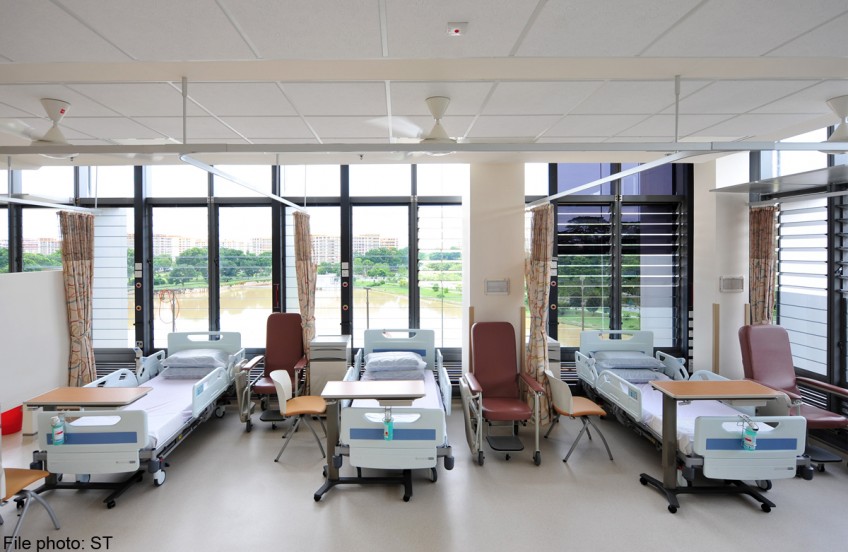Subsidised care: Is every doctor a good doctor?


SINGAPORE - First, a mea culpa.
A year ago, I wrote about MediShield Life shortly after the Prime Minister promised Medi- Shield would be revamped to bring in people with pre-existing illness. At that time, I predicted bitter wrangling over who should foot the cost of bringing this ill group into the health insurance risk pool, saying such debates would be "fractious".
I wrote: "After decades of exhortations about personal responsibility and reward based on individual performance and effort, we probably need a booster shot of altruism and solidarity."
Eleven months on, details of MediShield Life (MSL) and premium increases to cover the very sick, and the very old, are now made public. The Government will pay three-quarters of the cost of bringing in those with pre-existing illness. This group will pay 30 per cent more in premiums for 10 years as their share of the cost. Everyone else co-shares a modest part of the costs.
The cost-sharing formula has gone down well, and was accepted with little angst. Hardly anyone questioned why they had to pay a bit more and why taxpayers' money should be used to bring the sick into the insured pool.
I was wrong. And happily so.
There has been no fractious debate. Instead, MPs from three political parties joined forces in Parliament on Tuesday, to support a motion that the House endorses the MediShield Life Review Committee Report's proposals to implement universal health coverage in Singapore.
Over two days of debate, 25 MPs spoke. Workers' Party Non-Constituency MP (NCMP) Gerald Giam and Mrs Lina Chiam, an NCMP from the Singapore People's Party, were both concerned about MSL's long-term sustainability, an issue People's Action Party MPs like Christopher de Souza and Denise Phua were also seized with.
The promise of universal health coverage has attracted near-universal acclaim.
It's easy to forget how far we've come as a society. Not too long ago, government officials were robustly defending the status quo MediShield - one which leaves out the very old who most need financial security; excludes people with just one illness from all coverage; and leaves you out in the cold when you exceed lifetime claims limits. It wasn't too long ago that people argued it was unfair for healthy young people to pay more to cover the sick and old who are left out of MediShield.
Today, the acceptance of universal health coverage in MSL has changed us as a society for the better. How so? For one, MSL is based on solidarity. In the words of MP Sitoh Yih Pin, there's a spirit of "collective welfare", when everyone pays a bit to have universal coverage for all.
Solidarity also means not over- consuming health care, a point stressed by MP and general practitioner Lily Neo, warning against "unsavoury practices" from health providers, such as over-treating or over-testing.
Second, MSL reminds us that there are limits to personal and family responsibility.
Even if you take the best care of your health, you may fall sick and need expensive care some time. Even if your family members empty their Medisave accounts, it may not be enough.
Once MSL kicks in at the end of 2015, you no longer have to borrow or sell your home to pay your hospital bills. Instead, the rest of the community chips in.
Policy design used to be about protecting MediShield from people's large claims; now, it is about using MediShield Life to protect people from the anxiety of having to pay too-large claims. Some of the extreme risk is being shifted from the individual and his family, to the community (via the MSL risk pool) and the state (via subsidised premiums and Medifund).
What has not changed, though, are some basic principles that underpin personal responsibility, such as co-payments, and a high deductible so that small bills are still borne by the individual.
The Health Ministry (MOH) will also keep an eye on supplier- induced demand. For example, it has a Standard Drugs List, developed based on clinical and cost effectiveness. Drugs on the list are subsidised and the list is regularly reviewed to ensure access and affordability of treatments, said Health Minister Gan Kim Yong.
Which brings us to an important, rather under-discussed issue. MSL pays up to Class B2 and C charges. But how good is the care in these subsidised wards?
As Mrs Chiam remarked yesterday: "Some patients have even expressed the doubt of whether medications provided for patients have the same potency of those in B1 and A paying wards."
MP Fatimah Lateef, a doctor, assured Mrs Chiam that care, medication and treatment are the same across ward classes. Anecdotally, however, the perception is rife that care at subsidised wards is inferior. It's not just about creature comforts like the lack of air-con.
It's sometimes whispered that some drugs and treatments not on the standard list aren't even offered to subsidised patients because doctors fear telling them about treatments they can't afford. And then there's the choice of doctors, which you don't get in subsidised wards. Can a rookie surgeon be as good as a senior consultant who's performed the surgery for 10 years?
With subsidised care being set as the norm, perhaps MOH should do what the Ministry of Education is doing, and embark on a campaign to say that B2/C care is just as good as care in an A/B1 ward, minus the difference in air-con and number of beds in a room.
Its tagline might be: Every doctor a good doctor.
muihoong@sph.com.sg
This article by The Straits Times was published in MyPaper , a free, bilingual newspaper published by Singapore Press Holdings.

Get a copy of The Straits Times or go to straitstimes.com for more stories.